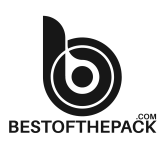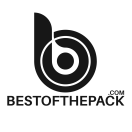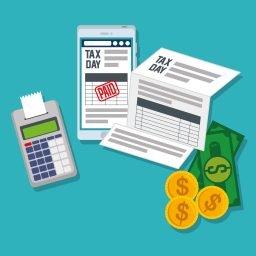
As a small business owner, I know firsthand how challenging it can be to manage your personal and business finances simultaneously. It’s a delicate balancing act that requires diligence, organization, and a strategic approach. Over the years, I’ve learned a few key lessons that have helped me stay on top of my finances and keep my business thriving.
One of the biggest mistakes I see small business owners make is keeping their personal and business finances completely separate. While it’s important to maintain clear boundaries, ignoring the connections between the two can lead to major headaches down the line. The reality is, the health of your business has a direct impact on your personal financial situation, and vice versa.
That’s why it’s so important to take an integrated approach to managing your finances. By aligning your personal and business goals, you can make more informed decisions, optimize your cash flow, and reduce the risk of costly mistakes. In this blog post, I’ll share some practical tips and strategies to help you do just that.
Establish Clear Financial Boundaries
The first step in balancing your personal and business finances is to establish clear boundaries between the two. This means setting up separate bank accounts, credit cards, and accounting systems for your business.
Commingling your personal and business funds can quickly become a messy and confusing situation. It makes it much harder to track expenses, manage cash flow, and prepare accurate financial statements for your business. It also increases the risk of accidentally using business funds for personal expenses, or vice versa, which can have serious tax and legal implications.
By keeping your finances separate, you’ll have a much clearer picture of the financial health of your business. This will allow you to make more informed decisions about investments, hiring, and other strategic initiatives. It also makes it easier to prepare your taxes and maintain compliance with financial regulations.
Develop a Comprehensive Financial Plan
Once you’ve established clear boundaries, the next step is to develop a comprehensive financial plan that aligns your personal and business goals. This should include:
- Personal financial goals: What are your short-term and long-term personal financial goals, such as saving for retirement, paying off debt, or buying a home?
- Business financial goals: What are your business financial goals, such as increasing revenue, reducing expenses, or expanding into new markets?
- Cash flow management: How will you manage your cash flow to ensure you have the funds to cover both personal and business expenses?
- Tax planning: How will you optimize your tax strategy to minimize your personal and business tax liabilities?
- Risk management: How will you protect your personal and business assets from potential risks, such as liability claims or unexpected emergencies?
By taking a holistic approach to your finances, you can identify areas where your personal and business goals overlap, and find ways to achieve them more efficiently. This might involve, for example, using business profits to fund personal savings or investments, or leveraging personal assets to secure financing for your business.
Automate and Streamline Your Financial Processes
One of the keys to effectively managing your personal and business finances is to automate and streamline your financial processes as much as possible. This can include:
- Automated bill payments: Set up automatic payments for recurring business and personal expenses, such as rent, utilities, and loan payments.
- Integrated accounting software: Use cloud-based accounting software like QuickBooks or Xero to manage your business finances, and connect it to your personal banking accounts to get a comprehensive view of your overall financial picture.
- Expense tracking apps: Use mobile apps like Mint or Personal Capital to track your personal and business expenses on the go, and categorize them for tax and budgeting purposes.
- Digital invoicing and payment processing: Use online invoicing and payment processing tools to streamline your business billing and collections, and ensure timely payments from clients.
By automating these processes, you’ll free up time and mental energy to focus on more strategic aspects of your business and personal financial management. You’ll also reduce the risk of errors, missed payments, or other financial mishaps that could have serious consequences.
Separate Your Retirement and Business Investments
One of the biggest mistakes I see small business owners make is commingling their retirement and business investments. While it might seem like a good idea to reinvest business profits back into the company, this can actually put your personal financial security at risk.
Instead, it’s important to maintain separate retirement and business investment accounts. This allows you to diversify your portfolio and reduce your overall risk exposure. It also ensures that your retirement savings are protected, even if your business experiences financial challenges or unexpected events.
To get started, consider setting up a retirement account like a 401(k) or IRA, and make regular contributions to it. You can also explore other investment options, such as real estate or stocks, to further diversify your portfolio.
At the same time, be sure to reinvest a portion of your business profits back into the company to fund growth and expansion. This could include investing in new equipment, hiring additional staff, or developing new products or services.
By separating your retirement and business investments, you’ll be better positioned to achieve your long-term financial goals, while also ensuring the ongoing success of your business.
Comparison Table: Personal Finance vs. Business Finance
To help illustrate the importance of balancing your personal and business finances, let’s take a look at a comparison table:
| Characteristic | Personal Finance | Business Finance |
|---|---|---|
| Purpose | Manage individual or household finances | Manage the financial operations of a business |
| Key Objectives | Achieving personal financial goals (e.g., saving for retirement, paying off debt, building wealth) | Generating revenue, managing expenses, and maximizing profitability |
| Funding Sources | Salary, investments, personal savings, loans | Sales, investments, business loans, grants |
| Financial Statements | Personal balance sheet, income statement, cash flow statement | Business balance sheet, income statement, cash flow statement |
| Tax Considerations | Individual income taxes, capital gains taxes | Business income taxes, payroll taxes, sales taxes |
| Risk Management | Protecting personal assets (e.g., life insurance, health insurance, disability insurance) | Protecting business assets (e.g., liability insurance, property insurance, cyber insurance) |
| Financial Decisions | Budgeting, saving, investing, debt management | Pricing, inventory management, capital expenditures, hiring, expansion |
As you can see, while there are some similarities between personal and business finance, there are also significant differences in terms of the objectives, funding sources, financial statements, tax considerations, and risk management strategies involved.
By understanding these distinctions and how they interact, you can develop a more holistic and effective approach to managing your finances as a small business owner.
Comparison Table: Personal Finance Apps vs. Business Finance Apps
In addition to the conceptual differences between personal and business finance, there are also various tools and technologies available to help you manage each area. Here’s a comparison table of some popular personal finance and business finance apps:
| App | Personal Finance | Business Finance |
|---|---|---|
| Mint | Personal budgeting, expense tracking, credit monitoring | N/A |
| YNAB (You Need a Budget) | Personal budgeting, expense tracking, debt management | N/A |
| Personal Capital | Personal financial planning, investment management, retirement planning | N/A |
| QuickBooks | N/A | Accounting, invoicing, payroll, tax preparation |
| FreshBooks | N/A | Invoicing, expense tracking, time tracking |
| Xero | N/A | Accounting, invoicing, payroll, inventory management |
| Wave | N/A | Accounting, invoicing, receipt scanning, payroll |
| Gusto | N/A | Payroll, benefits, HR management |
As you can see, there are a wide range of apps and tools available to help you manage both your personal and business finances. The key is to find the ones that best fit your specific needs and preferences.
For personal finance, apps like Mint, YNAB, and Personal Capital can be incredibly helpful for budgeting, expense tracking, and long-term financial planning. For business finance, tools like QuickBooks, FreshBooks, and Xero can streamline your accounting, invoicing, and payroll processes.
By using a combination of personal and business finance apps, you can gain a comprehensive view of your overall financial situation and make more informed decisions that align with your goals.
Conclusion: Integrating Your Personal and Business Finances
In conclusion, effectively managing your personal and business finances as a small business owner requires a strategic and integrated approach. By establishing clear boundaries, developing a comprehensive financial plan, automating and streamlining your processes, and separating your retirement and business investments, you can achieve greater financial stability and success.
Remember, your personal and business finances are inextricably linked, so it’s important to consider how decisions in one area will impact the other. With the right tools, strategies, and mindset, you can strike a healthy balance and ensure the long-term viability of both your business and your personal financial well-being.
If you’re feeling overwhelmed by the task of managing your finances, don’t hesitate to seek the guidance of a financial advisor or accountant. They can provide valuable insights and expertise to help you navigate the complexities of small business finance and personal wealth management.
Ultimately, the key to success is to stay organized, vigilant, and proactive in your financial management. By doing so, you’ll be well on your way to achieving your personal and business goals, and building a secure financial future for yourself and your family.
Frequently Asked Questions About Managing Personal and Business Finances
1. Can I use the same bank account for my personal and business finances?
It’s highly recommended to keep your personal and business finances separate by using different bank accounts. Commingling funds can lead to accounting confusion, tax complications, and legal issues.
2. How often should I review my personal and business finances?
Regularly reviewing your finances is crucial. It’s advisable to check your accounts weekly to track expenses, reconcile transactions, and ensure you’re on top of your financial health.
3. What are the common tax deductions for small business owners?
Small business owners can typically deduct expenses such as office supplies, marketing costs, travel expenses, and insurance premiums. Make sure to consult with a tax professional for personalized advice.
4. How can I improve cash flow for both my personal and business finances?
To enhance cash flow, consider negotiating better payment terms with clients or suppliers, reducing unnecessary expenses, and setting aside emergency funds for unexpected expenses.
5. Should I hire a professional accountant to manage my finances?
While it’s not mandatory, hiring an accountant can provide valuable expertise in tax planning, financial analysis, and compliance. It can save you time, minimize errors, and optimize your financial strategies.
6. What are some key performance indicators (KPIs) for tracking personal and business financial health?
For personal finances, KPIs may include savings rate, debt-to-income ratio, and net worth growth. Business KPIs could involve revenue growth, profit margins, cash flow ratios, and customer acquisition costs.
7. How can I protect my personal assets from business liabilities?
Forming a legal entity like an LLC can help shield your personal assets from business debts or lawsuits. Additionally, having adequate insurance coverage is crucial for mitigating risks.
8. What’s the best way to save for retirement as a small business owner?
Consider setting up a retirement account like a Solo 401(k) or a SEP IRA to save for retirement while enjoying tax benefits. Consult with a financial advisor to determine the most suitable option for your situation.
9. How can I manage debt effectively for both personal and business finances?
Prioritize high-interest debt repayment, negotiate lower interest rates where possible, and create a structured repayment plan. For business debt, explore refinancing options or seek guidance from a financial advisor.
10. How can I stay motivated to consistently manage my finances?
Set specific financial goals, track your progress regularly, celebrate small victories, and seek support from peers or mentors. Consider using financial management apps to simplify tracking and stay motivated.
11. Is it important to have an emergency fund for both personal and business finances?
Yes, having an emergency fund is crucial for both personal and business finances. Aim to set aside 3-6 months’ worth of expenses in an easily accessible account to cover unexpected financial challenges or disruptions.
By addressing these frequently asked questions about managing personal and business finances, you can gain a better understanding of the best practices, strategies, and considerations involved in maintaining financial stability and success as a small business owner.
















